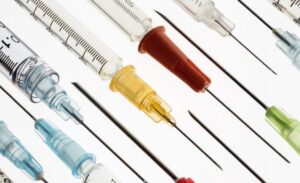Addressing unnecessary emergency department (ED) use
Addressing unnecessary ED use
In Washington, DC one of the most persistent challenges is ED use for low-acuity, non-emergency visits (LANE). Some years, LANE visits have risen to as high as 65% at some hospitals. This is compounded by a generous 911 policy that enables anyone for any reason to secure an ambulance ride to an ED. Many cities wrestle with this challenge and interventions to interrupt these patterns have only achieved modest success, at best, I.e. 10-30% reductions, which may or may not be sustainable. Prevailing wisdom about explanations for this intractable problem suggests people choose the ED due to lack of access to primary care. A recent study in Washington, DC by JSI highlighted adequate and in some cases, an over abundance of primary care access yet low utilization of primary care. How might we better think about and design primary care and preventive services that address this problem?




Lisa, is there much prevalence of urgent care facilities w extended hours? Perhaps the issue is more w uncertainty about how to navigate the system or the hours of access? Do EDs offer a fast track arm? Is there any opportunity without violating EMTALA to provide a navigational point, a sort of triage before ED triage, that can direct patients to adjoining urgent care facilities for lower acuity issues? It’s not the same as shunting them to primary care access channels but the immediate access of the ED may be too stark a contrast to our traditional primary care access channels to be able to successfully redirect without lowering the threshold to entry.
Dr. Lisa, I have always said that I love the way you approach your job.
Is there a Telemed solution that can actually reduce the ED services by the usage of a simple triage? It has not necesarily to be a state of the art and of course expensive hi tech thing…. wassap typo something maybe?
ACT
Hi Lisa. I totally agree that this is a widespread problem that needs a sustainable solution. One innovative model in the DC area is Nurse 911 triage. See NPR link: https://www.npr.org/sections/health-shots/2018/04/19/601987914/can-triage-nurses-help-prevent-911-overload
This may be a way to decrease unnecessary 911 utilization AND direct LANE patients to UC or clinics. Even better would be to direct patients to their medical home, specifically if the patient cohort is a managed care group. I look forward to finding out if the 911 triage decreases ED utilization. Hoping that patient outcomes are positive too.
Another model (which is dear to my heart!) is the DispatchHealth model. On-demand acute, minor emergent care in the home. We have had significant success in 911 diversions and decreased ED utilization with estimated health care cost savings of nearly $80M to date. We are expanding our EMS partnerships and getting hospital system buy in to further develop our program. Happy to discuss more.
A third option, would be EMS MIH programs. Paramedicine is an expanding arena that uses advanced paramedics through the 911 system to treat and release low acuity patients (under MD supervision) rather than transport.
Lots of options! I believe to truly tackle this issue there has to be a multi-pronged approach. The hard part is convincing the government and payers that it is worth reimbursing for these services.
Hi Lisa,
I do not know if the following is possible in your place but in my hospital we tried to solve it as follows:
In the Netherlands it is normal to first call your primary dokter if you have a problem, 24/7. Only real emergencies go directly to the ER. But, despite this policy, a lot of people came in to the ER because they think they need ER help and the primary docter is not good enough.
When people come in to the ER we have to see them, we cannot send them back, because of an incident of someone who I think died aften been send away.
So now in most cities, at least in my hospital, after 5 pm till 8 am, we have a primary docter just 2 meters from the ER, same waiting room. Every patient who calls for their Primary docter will be seen there and if neccesary is send to the ER after that.
When a person just comes in, we have a nurse who tells them after traige to go to the primary docter desk or is taken in in the ER.
So at this point, nobody can come in at their own initiative.
Helps a lot!
good luck, Viviane